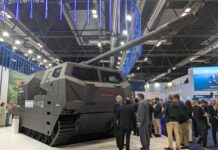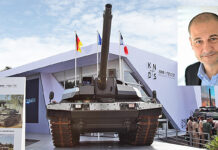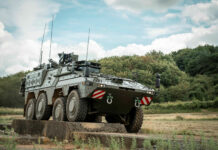The market for armoured fighting vehicles (AFVs) is growing, and the vehicle turret market is following suit.
The armoured fighting vehicle and vehicle turret markets are closely linked, both influenced by shared dynamics and various factors—political, technological, and tactical. Some of these factors were present during the past decade, while a number of new factors have emerged only since 2022. This unique combination has shaped the market and created favourable conditions for growth and development in the short term.
According to a forecast by Research and Markets, the AFV market is expected to reach USD 36.65 billion by 2030,[1] while the turret systems market is projected to grow to USD 2.7 billion by the same year.[2] The overall AFV market is expected to grow at a compound annual growth rate (CAGR) of 3.43% from 2024 to 2030, while the turret systems market is anticipated to grow at a CAGR of 4.0% during the same period.
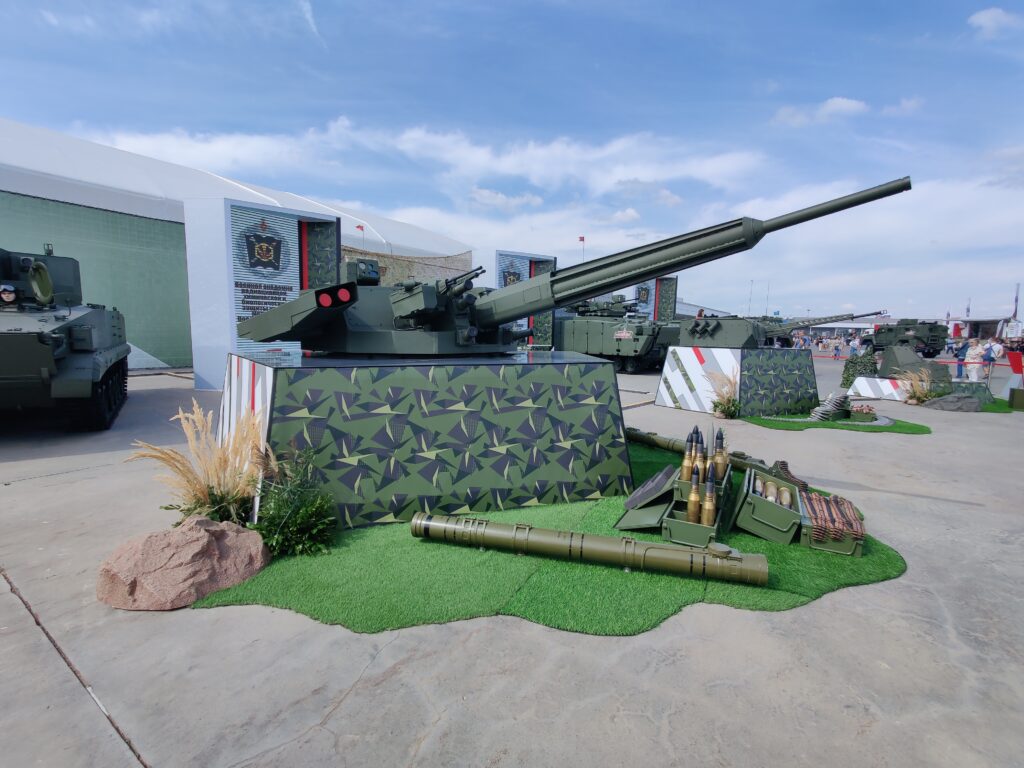
Key drivers
One of the most significant factors influencing arms markets is the growth in military spending over the last decade. According to the Stockholm International Peace Research Institute (SIPRI), global military expenditure experienced a slight decline from USD 1.94 trillion to USD 1.88 trillion between 2010 and 2014. However, starting in 2015, global military spending has experienced steady yearly growth, reaching nearly USD 2.4 trillion in 2023.[3] With strategic uncertainty and growing international tensions as key drivers fuelling the need to bolster military capabilities, this trend is likely to continue beyond 2025.
The AFV and vehicle turret markets have generally followed global trends over this period, with some notable milestones. Prior to 2015, low-intensity conflicts with sub-peer adversaries were considered the dominant form of warfare for the next decade. Accordingly, the demand for heavy armoured vehicles or advanced turret systems was relatively low, with the main efforts focused on lightly armoured and mine-resistant ambush protected (MRAP) type vehicles, as well as remotely controlled weapon systems, such as Kongsberg’s remote weapon station (RWS) family.
The ensuing years were marked by rising geopolitical instability, which led to increased military spending and a general understanding that a large-scale conventional conflict was once again possible. This factor has led to multi-year army modernisation programmes in many countries, which included investments in new armoured platforms and turret systems.
An example of such an advancement is the Stryker Infantry Carrier Vehicle – Dragoon (ICV-D), which was fitted with a Kongsberg MCT-30 turret armed with a Mk44 Bushmaster II 30 mm cannon, with the first prototype delivered in January 2017.[4] The decision to enhance the lethality of the Stryker was made following a US Army Urgent Operational Needs statement in March 2015, which identified a number of capability gaps across the US forces stationed in the European theatre compared to Russian Ground Forces.
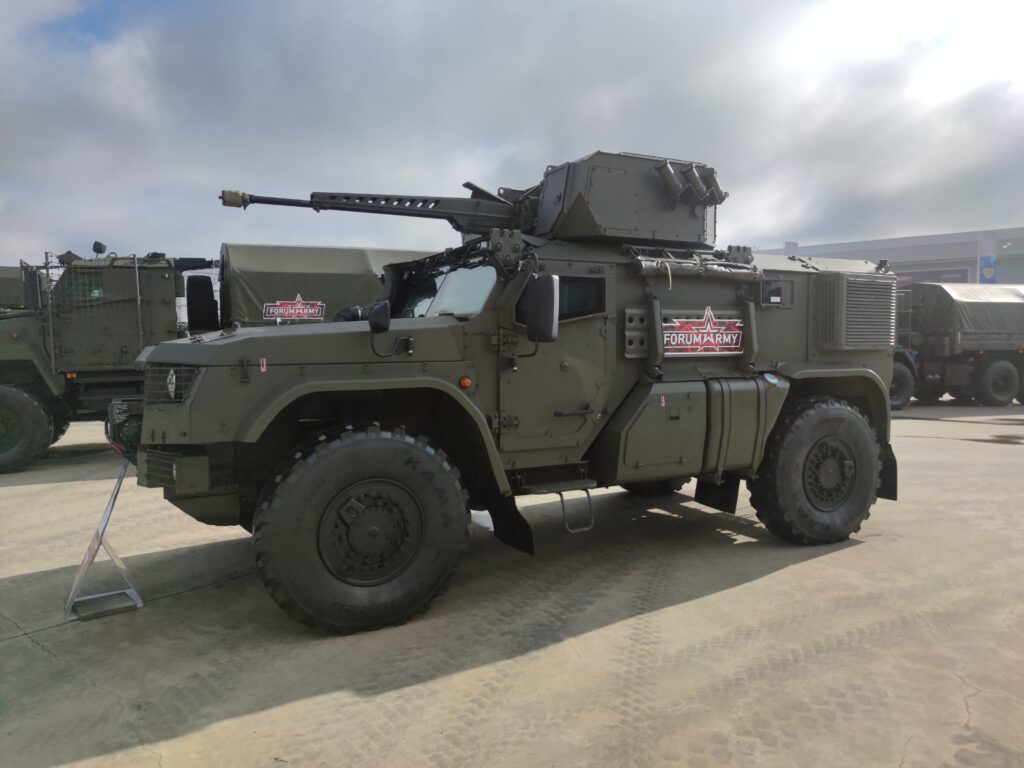
Armoured vehicles continue to play a vital role on the battlefield, and a modern conventional conflict will likely require large numbers of AFVs. While procuring new platforms is preferable, modernising legacy platforms will also be necessary. The number of active AFVs is expected to increase through 2030 and beyond. In order to operate and survive on the modern battlefield, both new and legacy platforms will require upgrades to enhance their survivability, lethality, situational awareness, and other characteristics. In many cases, these upgrades involve new turrets or systems and subsystems fitted to turrets.
C-UAV and VSHORAD
The proliferation of small drones and loitering munitions has been evident since the early 2010s. By 2014–2016, UAVs built from commercial components had proliferated in the Middle East, being used by various factions. Small UAVs were employed in reconnaissance roles, as bombers, as well as improvised loitering munitions and long-range strike assets during the conflicts in Syria and Iraq.[5] By 2020, this threat had been recognised at the highest level in many countries, including the US,[6] and had led to R&D and procurement programmes aimed at countering it.
Another driver is the need to bolster very short-range air defence (VSHORAD) capability at the tactical level. After the end of the Cold War, this capability was largely lost due to budgetary constraints and the prevailing understanding of the nature of warfare at the time; this led to many systems being retired or mothballed upon reaching the end of their life cycles. By the mid-2010s, VSHORAD was identified as a critical capability gap, and today it arguably remains one of the most pressing challenges for Western militaries.
The modern battlefield is saturated with various classes of drones and aerial targets, which continue to evolve, while major NATO adversaries, such as Russia and China, have retained a VSHORAD capability with their ground forces. These factors continue to fuel developments in the field of C-UAV and tactical air-defence capabilities integrated into many vehicle turret designs. The designs offered today largely fall into two general directions.
First, there are vehicle turrets designed for C-UAV or VSHORAD roles, with notable examples being Rheinmetall’s Oerlikon Skyranger family, and the reconfigurable integrated-weapons platform (RIwP) by Moog.
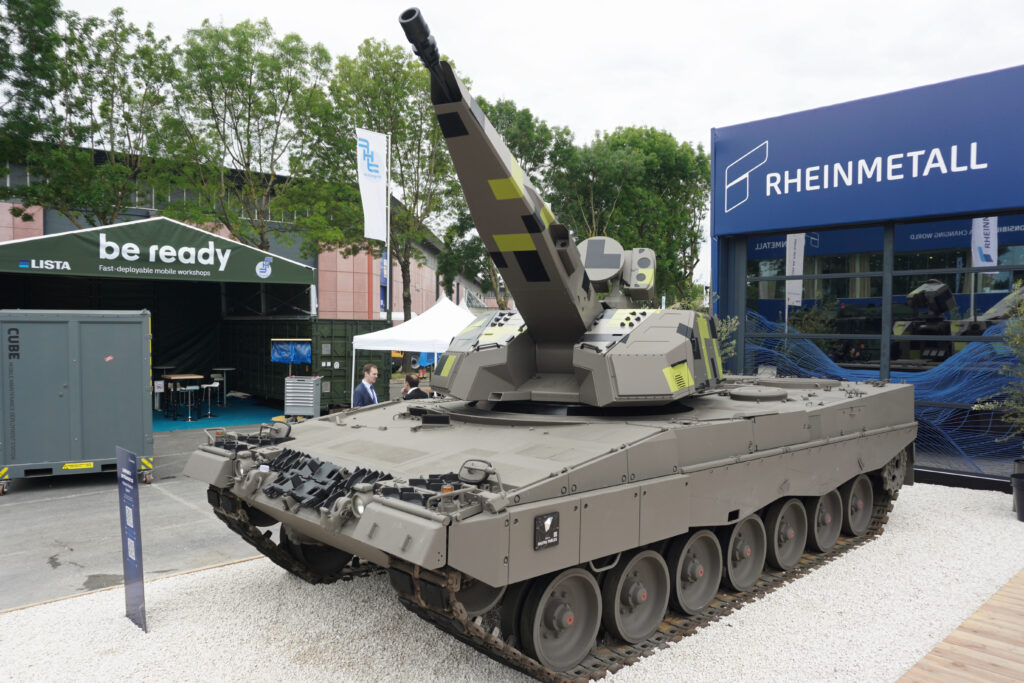
The Skyranger system has been integrated with various platforms, including the Boxer, KF-41 Lynx, Mowag Piranha V 8×8,[9] Indonesian Pindad Badak 6×6,[10] as well as 6×6 and 8×8 RMMV trucks. At the AUSA 2023 exhibition, Rheinmetall showcased a Skyranger 30 turret on a Textron Systems Ripsaw M5 unmanned ground vehicle (UGV),[11] while a concept featuring the Skyranger 35 turret on a Leopard 2 MBT hull was unveiled during the Eurosatory 2024 exhibition.[12]
Moog’s RIwP is built around the same modular principles. It is both payload and platform agnostic, able to accommodate various payloads and can be integrated into a wide array of manned and unmanned platforms (platform agnostic).[13] In 2023, for instance, General Dynamics Land Systems (GDLS) showcased a TRX tracked robotic platform fitted with Moog’s RIwP turret in C-UAS configuration.[14] [15] Other integrations include BAE’s Armoured Multi-Purpose Vehicle (AMPV), Boxer 8×8, JLTV 4×4, to name a few, with the latest integrations of RIwP in the VSHORAD configuration displayed at the IAV 2025 exhibition on both the Supacat 6×6 Armoured Closed Cab High Mobility Transporter (HMT) and the KNDS Dingo 3 4×4. Notably, RIwP has also been integrated onto the M113. While considered a legacy platform, it remains in service in many countries, and with the installation of a new turret, it could become a valuable asset capable of performing various combat roles.
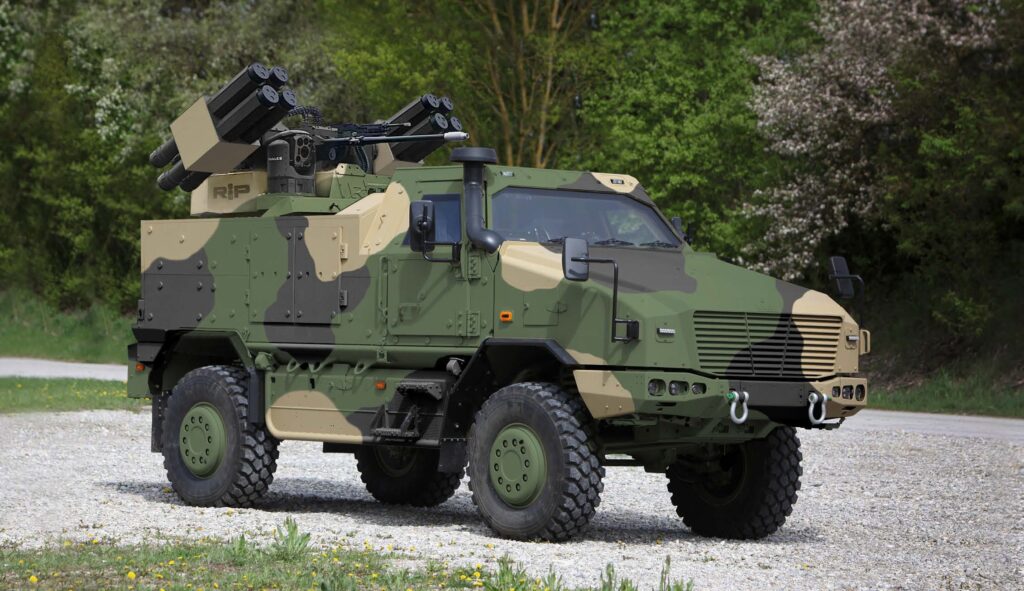
Medium-calibre turrets
The demand for medium-calibre turrets is another growing segment driven by several key factors. The evolution of warfare and the threat landscape have led to substantial changes in the combat roles of medium platforms, including IFVs, reconnaissance vehicles, and fire support vehicles. Medium-class AFVs now require enhanced protection, improved situational awareness, and the capability to operate in complex environments such as urban areas, often separated from heavy armour. Additionally, the range of threats that they must detect, avoid, or neutralise has expanded significantly. Addressing these threats requires enhancements in firepower, which have prompted many militaries to initiate modernisation programmes, aimed at the procurement of new-generation medium-class platforms or upgrades for legacy platforms.
Notably, integration of medium-calibre turrets equipped with modern optics, fire control systems (FCS) and armaments is often considered a labour and cost-effective way of improving combat capabilities of legacy AFVs. Examples of such capability enhancements through upgrades include Russia’s BMP-1AM Basurmanin, the BRM-1K reconnaissance vehicle, BMP-2M with the B05Ya01 Berezhok turret, Finnish BMP-2MD, and a capability enhancement and life-extension programme currently offered by FNSS Defence for ACV-15 IFVs.[18] The disadvantage of this approach, however, is that upgrades typically focus on ‘what is possible’, constrained by design and budgetary limitations, rather than on ‘what is needed’ from a military perspective.
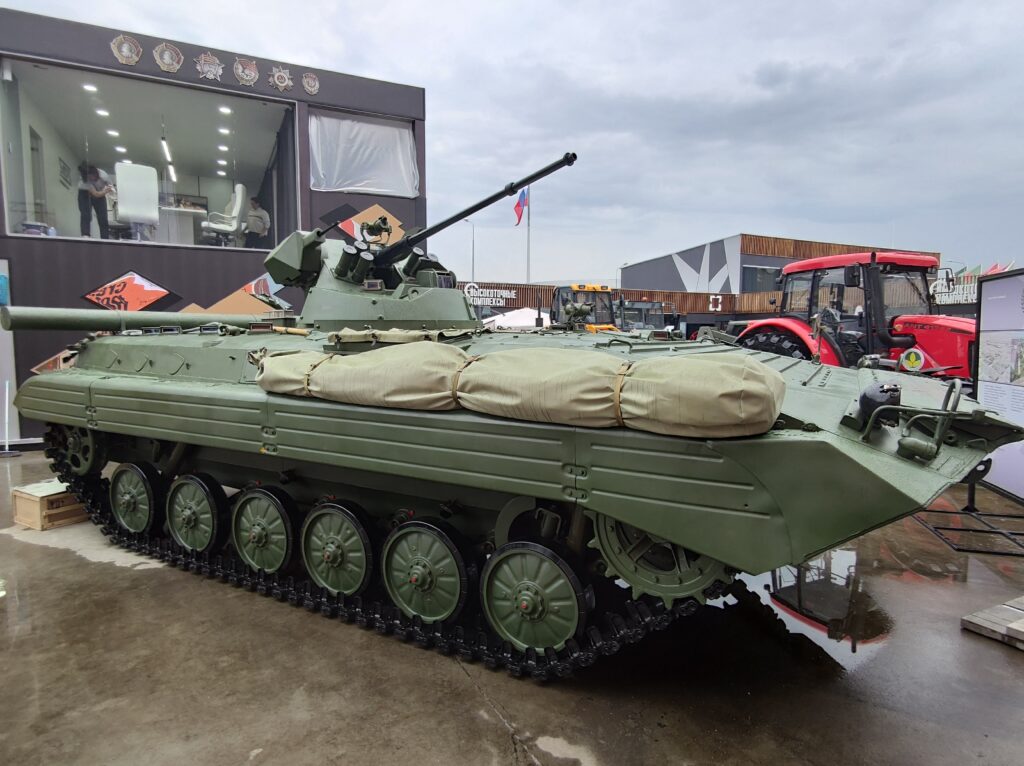
Currently, the demand for medium-calibre turrets for medium-tracked and wheeled platforms is driven by large-scale programmes aimed at replacing ageing medium AFVs with next-generation platforms. Such programmes include the XM30 Mechanized Infantry Combat Vehicle in the US,[19] the Futuristic Infantry Combat Vehicle (Tracked) in India, the Kurganets-25 and Bumerang programmes in Russia, the Borsuk in Poland, and Australia’s LAND 400 Phase 3, among others.
Finally, technical and tactical factors are prompting changes and expanding the market of medium-calibre turrets. One such factor is the requirement for lethality enhancements for medium platforms. Over the last few decades, most designs have evolved from the typical 20-25 mm autocannons of the Cold War era to more capable medium-calibre weapons ranging from 30-40 mm, to 50–57 mm. The latter category includes experimental systems such as the XM913 50 mm automatic cannon (chambered in 50 × 228 mm ‘Supershot’), Russia’s AU-220M turret featuring the 2A91 57 mm cannon (chambered in 57 × 347 mm SR), and Epokha turret featuring the 2A94 57 mm cannon (chambered in 57 × 93 mm RB). While none has yet entered service, the XM913 Bushmaster Chain Gun has been selected as the primary weapon for the US Army’s Next Generation Combat Vehicle programme.[20]
Another area for growth is the need to increase survivability for medium platforms, which can be achieved through enhancements in passive protection, as well as the implementation of active and passive protection systems in turret designs. While earlier IFV and APC protection relied primarily on passive armour, the latest variants typically feature both hard-kill and soft-kill active protection systems and advanced sensor packages. Examples include the US Army’s Bradley M2A4E1 IFV, the CV90 MkIV, the AS21 Redback, the ASCOD platform[21] and the KF41 Lynx.
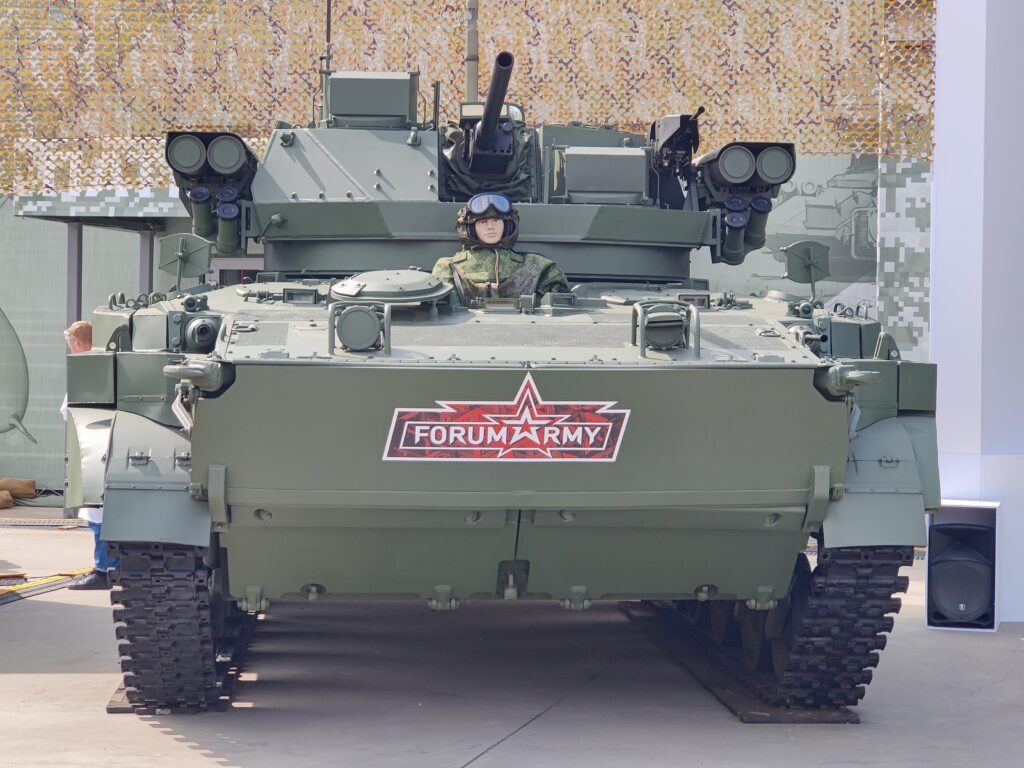
turret has seen limited production, its current status remains unclear. [Alexey Tarasov]
Large-calibre turrets
The demand for large-calibre turrets is driven by the need for lighter, more cost-effective armoured vehicles capable of delivering firepower, without the high operational costs of main battle tanks (MBTs), as well as the specific conditions of certain theatres of operations and the requirements for the rapid deployment of combat vehicles. These factors have sparked interest in fire support vehicles based on medium-tracked and wheeled platforms, equipped with large-calibre turrets, and have also revived interest in fire support vehicles (FSVs), sometimes colloquially referred to as ‘light tanks’.
Over the last decade, FSVs have proliferated and entered service in many countries, including Indonesia (Kaplan MT/Harimau), the Philippines (Sabrah), and the US (M10 Booker), among others. In a similar vein, China has introduced the ZTQ-15, but this is far closer to a ‘true’ light tank than the aforementioned vehicles. More countries are likely to either open R&D programmes or express interest in procuring this class armoured vehicles. The latest is Slovakia, which is considering the procurement of CV90120 FSV as an alternative to the Leopard 2A8, as reported by local media citing the country’s Deputy Prime Minister and Defence Minister, Robert Kaliňák, on 9 January 2025.[22]
Modern medium-weight platforms are based on the principles of modularity, allowing them to be equipped with various turret solutions available on the market, whether medium or large-calibre, and configured according to the specific needs and requirements of the army. For instance, Otokar’s Tulpar multipurpose platform has been showcased in multiple variants, including the IFV fitted with a medium-calibre turret, while the FSV variant was displayed with Leonardo’s HITFACT II turret, featuring a 120 mm smoothbore gun.[23] An earlier variant featured a Cockerill 3105 turret with a 105 mm high-pressure gun.[24]
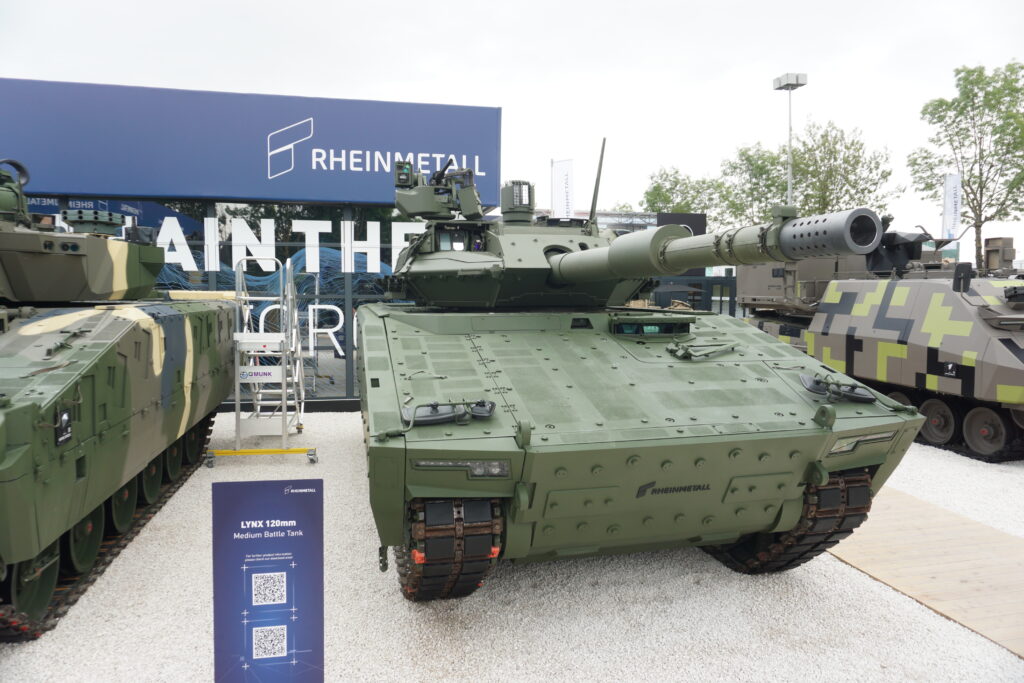
Finally, large-calibre indirect fire solutions appear to be emerging as a distinct segment of the vehicle turret market. A notable example is the RCH 155 artillery system by KNDS; this automated artillery module, featuring a 155 mm L52 gun and an autoloader, was initially developed for the Boxer 8×8 platform but, by 2025, was integrated with several other platforms, including the Boxer tracked, Piranha IV Heavy Mission Carrier (HMC) 10×10, a modified ASCOD 2 platform (Donar), and an Iveco Trakker 8×8 truck (AGM Iveco).[26]
A similar example is the artillery module co-developed by Rheinmetall and Elbit Systems, simply referred to as the ‘Artillery Turret’ by Rheinmetall, armed with a 155 mm L52 gun. This has so far been shown integrated with Rheinmetall’s HX3 truck, and an Oshkosh truck, known as the ‘Sigma’ in the latter iteration.
While the large-calibre turret segment is arguably the most complex in terms of production and engineering, the growing interest in automated and modular artillery systems may drive the emergence of new products and integrations.
Looking ahead
The ongoing complex geopolitical situation is likely to remain a key market driver, fuelling the growth of military spending worldwide.
The AFV turret market will need to adapt to changes in tactics and ground warfare, necessitating further improvements in AFV turret designs. The need for enhanced firepower, survivability, and adaptability will prompt the integration of cutting-edge systems, such as new optics/sighting systems, the integration of reconnaissance UAVs (both tethered and untethered), next-generation ATGMs, and advanced situational awareness systems, among others.
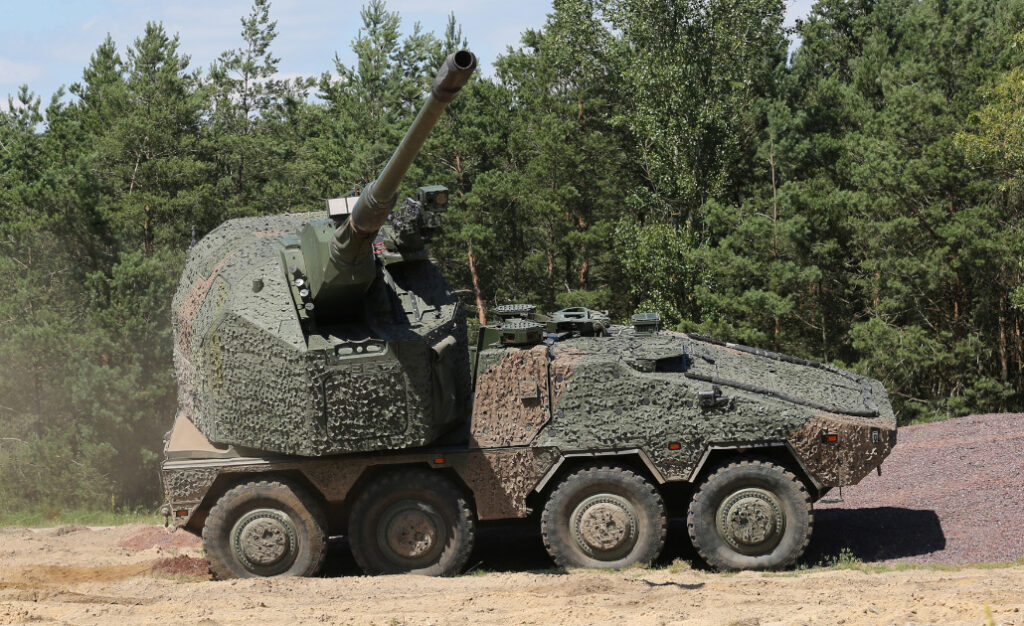
While several turrets have been tested with UGVs, this class of vehicle has not yet been widely adopted due to various factors. However, with ongoing developments in unmanned technology, the demand for UGVs, and consequently unmanned turrets, is likely to increase.
Most AFV fleets will feature a combination of modern and legacy designs, but overall, the number of AFVs in service will likely increase, further driving the demand for modern turrets. Ultimately, the overall increase in AFV numbers will ensure that the market for turrets remains strong in the coming years.
Alexey Tarasov
[1] Armored Fighting Vehicle Market by Type, Propulsion Type, Application, End-User – Global Forecast 2025-2030 – https://www.researchandmarkets.com/report/armored-combat-support-vehicle#tag-pos-1
[2] Turret Systems – Global Strategic Business Report – https://www.researchandmarkets.com/reports/4806223/turret-systems-global-strategic-business-report#src-pos-2
[3] SIPRI Military Expenditure Database, data retrieved on 15 Jan 2025 – https://www.sipri.org/databases/milex
[4] First Stryker vehicle prototype with 30 mm cannon delivered to the Army – https://www.army.mil/article-amp/177472/first_stryker_vehicle_prototype_with_30_mm_cannon_delivered_to_army
[5] Did US drones swarm a Russian base? Probably not, but that capability isn’t far off. Oct 29, 2018 – https://www.airforcetimes.com/news/2018/10/29/did-us-drones-swarm-a-russian-base-probably-not-but-that-capability-isnt-far-off/
[6] Unmanned aircraft systems strategy – https://media.defense.gov/2021/Jan/07/2002561080/-1/-1/1/DEPARTMENT-OF-DEFENSE-COUNTER-SMALL-UNMANNED-AIRCRAFT-SYSTEMS-STRATEGY.PDF
[7] Oerlikon Skyranger® mobile air defence system – https://www.rheinmetall.com/Rheinmetall%20Group/brochure-download/Air-Defence/B327e0823-Oerlikon-Skyranger.pdf
[8] https://www.rheinmetall.com/en/products/air-defence/air-defence-systems/mobile-air-defence-skyranger
[9] Rheinmetall supplies Skyranger 30 for Denmark’s mobile air defence system – https://www.rheinmetall.com/en/media/news-watch/news/2024/09/2024-09-30-rheinmetall-supplies-skyranger-30-for-denmark’s-mobile-air-defense-system
[10] Mengenal Ranpur Badak Varian Skyranger Penjaga Udara Indonesia – https://indonesiadefense.com/mengenal-ranpur-badak-varian-skyranger-penjaga-udara-indonesia/
[11] Rheinmetall Italia touts Ukraine deployment of Skynex air defence gun – https://www.defensenews.com/global/europe/2024/01/26/rheinmetall-italia-touts-ukraine-deployment-of-skynex-air-defense-gun/
[12] Rheinmetall presents Skyranger 30 and Skyranger 35 on Lynx, Leopard 2 and Boxer at Eurosatory 2024 https://defence-industry.eu/rheinmetall-presents-skyranger-30-and-skyranger-35-on-lynx-leopard-2-and-boxer-at-eurosatory-2024/
[13] Reconfigurable integrated-weapons platform – https://www.moog.com/products/turreted-weapon-systems/riwp.html#
[14] Tracked Robot 10-tonne (TRX) – https://www.gdls.com/trx/
[15] Moog’s RIwP turret defeat drones from GDLS’ tracked robotic 10-tonne (TRX) platform. https://fast.wistia.com/embed/medias/tokc28yb59
[16] Contract to deliver counter unmanned aerial system (C-UAS) to Germany worth 250 MNOK – 4 Dec 2019 – https://www.kongsberg.com/newsroom/news-archive/2019/contract-to-deliver-counter-unmanned-aerial-system-c-uas-to-germany-worth-250-mnok/
[17] International Fund for Ukraine orders multiple C-UAV air defence systems from Kongsberg https://www.kongsberg.com/kda/news/news-archive/2023/international-fund-for-ukraine-orders-multiple-c-uas-air-defence-systems-from-kongsberg/
[18] https://www.fnss.com.tr/en/products/acv-15t1-capability-enhancement-life-extension-program
[19] The US Army’s XM-30 Mechanized Infantry Combat Vehicle (formerly known as the Optionally Manned Fighting Vehicle [OMFV]), Updated March 12, 2024 – https://crsreports.congress.gov/product/pdf/IF/IF12094
- [20] 50×228 mm Bushmaster® Chain Gun – https://www.northropgrumman.com/what-we-do/advanced-weapons/bushmaster-chain-guns/50x228mm-bushmaster-chain-gun
[21] ASCOD IFV with Trophy system presented in Bucharest – https://defence-industry.eu/ascod-vehicle-with-trophy-system-presented-in-bucharest/
[22] Kaliňák chce tanky aj v čase škrtov. Spomenul švédsky prototyp, ktorý si zatiaľ nikto neobjednal – https://e.dennikn.sk/4388348/kalinak-chce-tanky-aj-v-case-skrtov-spomenul-svedsky-prototyp-ktory-si-zatial-nikto-neobjednal/
[23] WDS 2024 – Otokar and Leonardo unveil new Tulpar light tank solution – https://www.edrmagazine.eu/otokar-and-leonardo-unveil-new-tulpar-light-tank-solution
[24] COCKERILL® 3105 brochure – https://defense.johncockerill.com/wp-content/uploads/sites/5/2022/06/23606.jc-defense-3105-specsheet-a4h-en-hd.pdf
[25] Elbit Systems awarded USD 172 million contract to supply light tanks to a country in Asia-Pacific – https://elbitsystems.com/pr-new/elbit-systems-awarded-172-million-contract-to-supply-light-tanks-to-a-country-in-asia-pacific/
[26] https://www.knds.de/en/systems-products/wheeled-vehicles/artillery/rch-155/



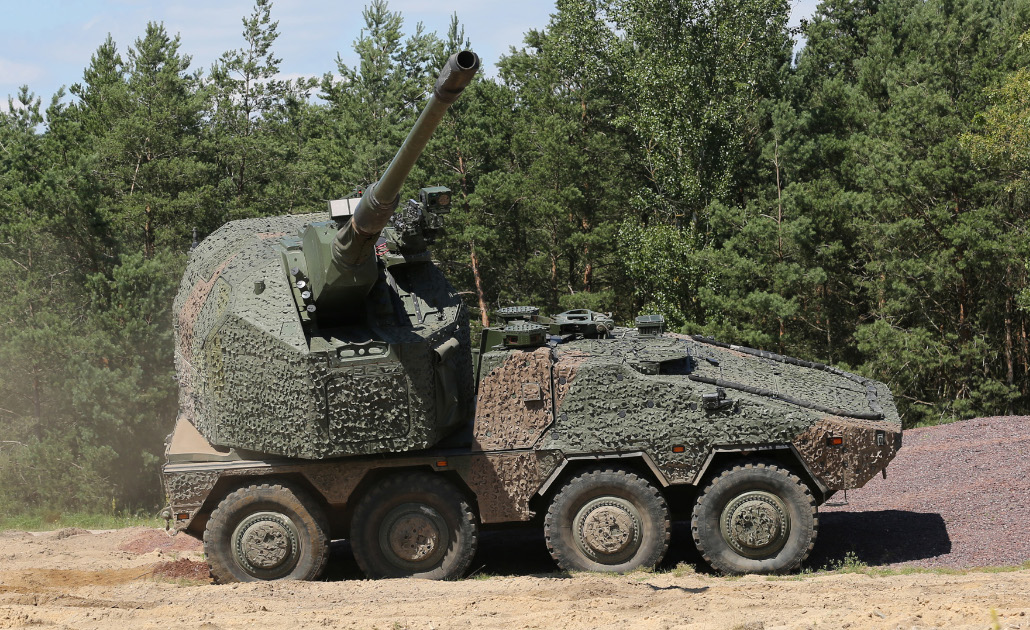

![The US Army’s search for new self-propelled artillery: A long haul for long guns The ERCA autoloader being tested at Yuma Proving Ground in June 2019. Although the US Army conducted a number of successful tests with ERCA prototypes, engineering issues, such as excessive wear on the 58-calibre gun tube after firing a relatively small number of rounds, led to the ERCA prototyping effort’s discontinuation in April 2024. [US Army]](https://euro-sd.com/wp-content/uploads/2025/10/1_ERCA-US-Army-Kopie-218x150.jpg)
![The continuing evolution of tube artillery The 8×8 variant of the CAESAR SPH on display at the Eurosatory 2024 exhibition. [Tank Encyclopedia, courtesy photo]](https://euro-sd.com/wp-content/uploads/2025/08/caesar-8x8-at-eurosatory-2024-Kopie-218x150.jpg)
![Loitering munitions: Production scaling kicks into higher gear Northrop AGM-136A Tacit Rainbow on display in the Cold War Gallery at the National Museum of the US Air Force in Dayton, Ohio. [USAF]](https://euro-sd.com/wp-content/uploads/2025/08/Northrop_AGM-136A_Tacit_Rainbow-Kopie-218x150.jpg)
![MGCS status update The KNDS EMBT-ADT 140 technology demonstrator on display at the Eurosatory 2024 exhibition. This model featured the 140 mm configuration of the ASCALON gun. [Mark Cazalet]](https://euro-sd.com/wp-content/uploads/2025/08/EMBT-EDT-140_Mark-Cazalet-Kopie-218x150.jpg)
